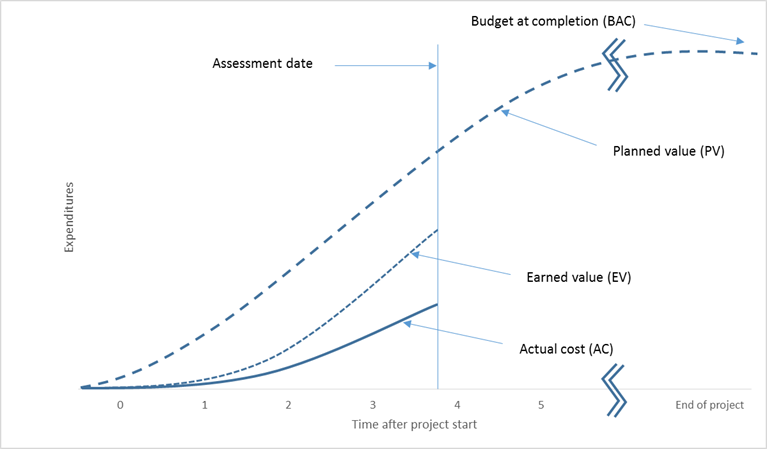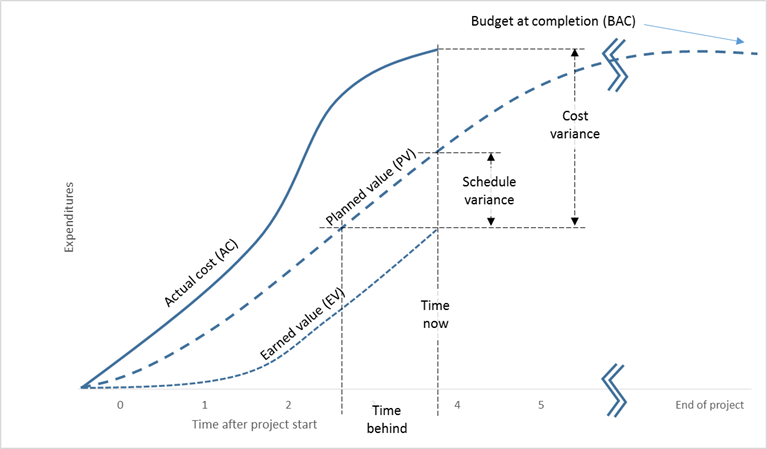Project management can be a daunting task, especially if you are new to the role. To ensure that you stay on top of things throughout the course of your project, whilst keeping everyone happy, we recommend using Earned Value Equations.
This article will discuss the benefits of using Earned Value Formulae when conducting your projects, using basic, intermediate and advanced calculations.
BASIC PROJECT MANAGEMENT
Whether you’re new to Project Management or you’ve been working on it for years, there are a number of things that you need to consider when planning and running a project. This includes but is not limited to:
- Fundamentals of Project Management
- Characteristics of a project
- Project initiation and scope planning
- Scope definition, verification, and change control
- Time management
- Schedule development and control
- Resource identification and cost approximating
- Budgeting and cost control
All of these fundamentals are scalable too. Ergo, something that’s relevant in a multi-national corporation also needs to be considered for the smallest start up.
Earned Value Equations will directly influence many of these points, most notably, time management, scheduling and budgeting.
DEFINITION
Earned Value Management (Equations) is a project management technique for measuring project performance and progress. With the ability to measure scope, schedule and cost, the calculations are particularly useful when providing accurate forecasts of project performance.
BASIC EARNED VALUE EQUATIONS
Because “winging it” isn’t a real option. Earned Value calculations are a great way of figuring out the success of your project throughout its duration. In conjunction with a brief understanding of project management, these calculations can help ensure that everything runs smoothly and on schedule. Excellent PM skills will ensure that shareholders and internal decision makers are confident that you’re in control and the right person to be in charge of the next project.
In its simplest form you can monitor your project using the following variables:
- Planned Value (PV)
- Budgeted Cost of Work Performed (BC)
- Actual Cost (AC)
- Earned Value (EV)
Once you have plotted these figures into an Excel Spreadsheet or a Project Work sheet, you’ll be able to produce a visualisation similar to the above. The graph will give a good indication of trends and be able to point your project in the right direction, if for whatever reason EV is not increasing as desired or expected. Of course, independently the figures in this graph mean very little, though you can clearly see that the EV outweighs the AC, yet is only half way towards the PV.
INTERMEDIATE EARNED VALUE EQUATIONS
To analyse the results more accurately there are a number of equations which can help:
1. Cost Performance Index (CPI)
The following equation will hopefully tell you that your money is being well spend and that the project is either profitable or at the least, within budget. If you have a CPI of less than “1”, this means that you’re overspending and may need to refer to the spend of your project to ensure EV stays on track.
PV / AC = CPI
2. Schedule Performance Index
Are you on course to finish the project on time? Used in conjunction with progress reports, you’ll be able to highlight areas whereby the project is falling behind schedule and hopefully put things back on track, if they are indeed off course.
EV / PV = SPI – a figure less than 1 means that the project is behind schedule.
3. Cost Variance (CV)
Similar to CPI, the CV is a great way to see whether your money is being spent well. As opposed to showing a percentage analysis, the CV gives a value in pounds, which most stakeholders are interested in.
EV – AC = CV
4. Schedule Variance
The SV can be really useful in figuring out when a project is due to be complete. Whereas many would argue that the CPI is more valuable than the CV, the SV is potentially more insightful than SPI.
EV – PV = SV
In the diagram above, it’s clear to see that the AC of the project is much higher than the EV and more still than PV. Between weeks 2 & 4, the AC has increased dramatically (it’s actually over the projected BAC), it may be worth the PM revisiting these costs to ensure that everything is on course for EV to catch up with PV and account for whether the AC’s were justified.
Most businesses will stop there with the analysis of EVM, however, for savvy Project Managers, there are a few more equations to be figured out – and these will impress your stakeholders.
ADVANCED EARNED VALUE EQUATIONS
At the beginning of the project you will have set your total expenditures, however, during the course of the task this is likely to change. So, in order to keep your analysis up to date the Estimate At Completion (EAC) and Estimate To Complete (ETC) are really useful calculations.
EAC = A current estimate of the total cost of the project.
ETC = An estimate of the funds required to complete the project.
There are two calculations to figure the EAC of your project;
1. Assuming that the Cost Performance for the remainder of the project will stay the same as that budgeted:
EAC = AC + ((BAC – EV) / CPI) = BAC / CPI
2. Assume that the Cost Performance remains the same for the remainder of the task as it has for the beginning.
EAC = Budget At Completion (BAC) / Cumulative Cost Performance Index (CPI)
Regardless of which of the two calculations you use, the ETC will always be:
ETC = Budget at completion (BAC) – Actual costs to date (AC)
Regular revisions to these equations will eliminate there being any nasty surprises and will ensure that you have one less weight off of your shoulders.
HOW CAN I STOP PROBLEMS BEFORE THEY ARISE?
All projects have a life cycle, regardless of whether they over run or take weeks or months to complete.
Let’s imagine for a moment that a project is 10 weeks in duration. Reviewing your monetary and time costs each week will give you a great indication of the progression of your project.
Inputting your findings into a Spreadsheet such as Microsoft Excel will allow you to easily produce graphical representations of your data, helping you to visualise the process. Excel 2013’s recommended charts make for an even more aesthetically pleasing visualisation.
For those with Microsoft Project, similar analysis can be made.
EARNED VALUE EQUATIONS & YOUR STAKEHOLDERS?
It goes without saying, that a project that’s running smoothly is set to benefit everyone involved. This includes you as a Project Manager. Knowing that things are on track and within budget is a weight off your shoulders when you need to report back to the company on the status of the project.
Those working on the project too will enjoy piece of mind and clarity over how things are going, hopefully leading to a happier and more motivated workforce.
Stakeholders of all kinds will be pleased with your feedback too. Regardless of whether you are running slightly behind schedule or a little outside of your budget, at least you’ll be able to keep them informed every step of the way and update them with how you plan to rectify shortfalls.
CONCLUSION
In many cases Earned Value Equations can highlight a problem before it escalates. Regular analysis of the data, using MS Office tools such as Excel or MS Project will be able to visualise trends and give you the indicators of when you need to drill down further into the “Why’s” and “How to’s” of Project Management.
Of course the answers differ for each case and business in question, but simply, if your AC is too high, you’ll need to shed cost somewhere and if the SPI is too low, you’ll need to speed things up.
HOW CAN I LEARN MORE ABOUT PROJECT MANAGEMENT
Our Best STL MS Project Courses are tailored to each group that attends. Whether you’re new to the role of PM or have been doing it for a few years and would like to study tips and case studies that will help your projects run smoother, there’s something for everyone. We offer training courses from introduction to advanced level. To see which course would best suit your development, visit our course overview.
PM’s can often be isolated within an organisation and often enjoy meeting professionals from other companies that perform similar tasks. These sessions are also great for sharing ideas and discussing methods of best practice.


